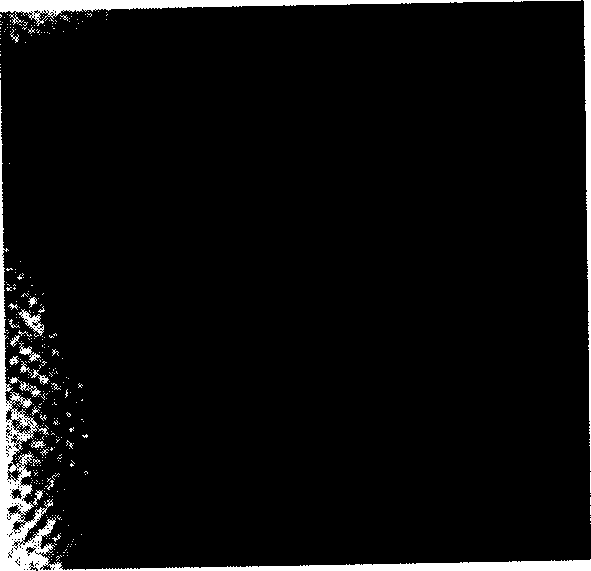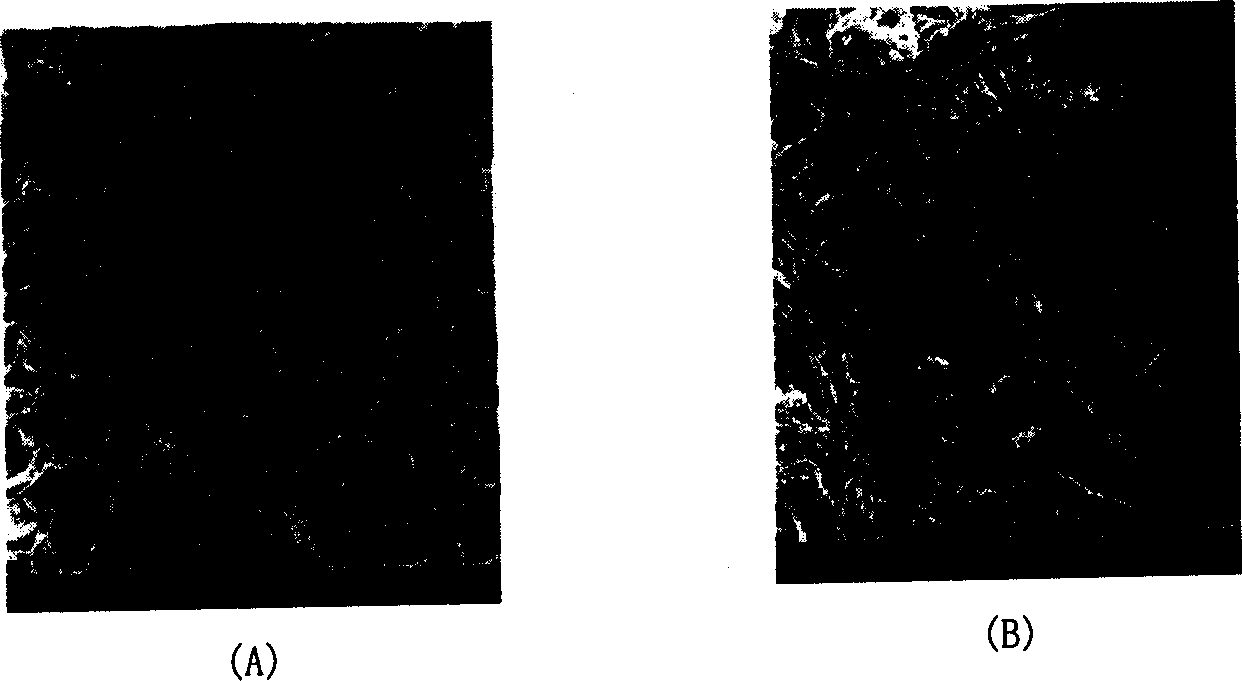Porous scaffold with complex contour and its preparing process
A porous scaffold and shape technology, applied in the fields of polymer materials and biomedical engineering, can solve the problems of unfavorable cell implantation and ingrowth of nutrients and metabolites, solvent volatilization and difficulty in demoulding, and achieve good shape retention ability, Ease of preparation
- Summary
- Abstract
- Description
- Claims
- Application Information
AI Technical Summary
Problems solved by technology
Method used
Image
Examples
Embodiment 1
[0054] Example 1, first make a human ear model with gypsum, put it into a copper mold box, and pad the bottom flat; mix the silicone rubber main agent and curing agent with a ratio of 10 grams: 0.68 grams, then fill it into the mold box, press In practice, solidify at room temperature for 5 minutes, demoulding to obtain flexible mold A (female mold A); put female mold A into the mold box, then put it into the human ear model, repeat the above process to obtain female mold B (see figure 1 ); Simultaneously, design and process copper rigid mould, make flexible mold just can be put into rigid mould; 0.3 gram viscosity-average molecular weight is 55000 PCL is dissolved in the chloroform concentrated solution that forms PCL in 2 gram chloroforms; Sieve the porogen particles, add 2.7 grams of sodium chloride particles with a particle size of 280-450 μm into the solution, stir evenly, and wait for the solvent to partially volatilize to form a dough-like polymer / solvent / porogen compoun...
Embodiment 2
[0055] Embodiment 2, model making and flexible-rigid composite mold design and manufacture are the same as embodiment 1. Dissolve 0.21 grams of PCL with a viscosity average molecular weight of 55,000 in 2 grams of chloroform to form a concentrated solution of PCL in chloroform, sieve the sodium chloride porogen particles, and add 2.79 grams of sodium chloride particles with a particle size of 280-450 μm to the solution , stir evenly, and wait until the solvent is partially volatilized to form a dough-like polymer / solvent / porogen compound; put the flexible mold A into the rigid mold, fill in the polymer / solvent / porogen compound, and cover the flexible mold B, press the metal platen again, compact it, fasten it with bolts, and keep it at room temperature for 5 minutes to fully set the shape; demoulding, to obtain a solid support of the polymer / solvent / porogen composite with the desired shape, in the Leave it overnight at room temperature to evaporate the solvent, then remove res...
Embodiment 3
[0056] Embodiment 3, model making and flexible-rigid composite mold design and manufacture are the same as embodiment 1. Dissolve 0.21 grams of PCL with a viscosity average molecular weight of 55,000 in 2 grams of chloroform to form a concentrated solution of PCL in chloroform, sieve the sodium chloride porogen particles, and add 2.79 grams of sodium chloride particles with a particle size of 180-280 μm to the solution , stir evenly, and wait until the solvent is partially volatilized to form a dough-like polymer / solvent / porogen compound; put the flexible mold A into the rigid mold, fill in the polymer / solvent / porogen compound, and cover the flexible mold B, press the metal platen again, compact it, fasten it with bolts, and keep it at room temperature for 5 minutes to fully set the shape; demoulding, to obtain a solid support of the polymer / solvent / porogen composite with the desired shape, in the Leave it overnight at room temperature to evaporate the solvent, then remove res...
PUM
| Property | Measurement | Unit |
|---|---|---|
| Aperture size | aaaaa | aaaaa |
| Particle size | aaaaa | aaaaa |
Abstract
Description
Claims
Application Information
 Login to View More
Login to View More - R&D
- Intellectual Property
- Life Sciences
- Materials
- Tech Scout
- Unparalleled Data Quality
- Higher Quality Content
- 60% Fewer Hallucinations
Browse by: Latest US Patents, China's latest patents, Technical Efficacy Thesaurus, Application Domain, Technology Topic, Popular Technical Reports.
© 2025 PatSnap. All rights reserved.Legal|Privacy policy|Modern Slavery Act Transparency Statement|Sitemap|About US| Contact US: help@patsnap.com



